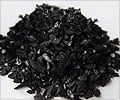Forestry researchers at Oregon State University (OSU) have come out with a new report catastrophic forest fires. The report says that widely sought efforts to reduce fuels that increase catastrophic fire in Pacific Northwest forests will be counterproductive to another important societal goal of sequestering carbon to help offset global warming.
The study showed that even if the biofuels were used in an optimal manner to produce electricity or make cellulosic ethanol, there would still be a net loss of carbon sequestration in forests of the Coast Range and the west side of the Cascade Mountains for at least 100 years, and probably much longer."Fuel reduction treatments should be forgone if forest ecosystems are to provide maximal amelioration of atmospheric carbon dioxide over the next 100 years," the study authors wrote in their conclusion.
"If fuel reduction treatments are effective in reducing fire severities in the western hemlock, Douglas-fir forests of the west Cascades and the western hemlock , Sitka spruce forests of the Coast Range, it will come at the cost of long-term carbon storage, even if harvested material are used as biofuels," they added.
The study raises serious questions about how to maximize carbon sequestration in these fast-growing forests and at the same time maximize protection against catastrophic fire.
"It had been thought for some time that if you used biofuel treatments to produce energy, you could offset the carbon emissions from this process," said Mark Harmon, holder of the Richardson Chair in the OSU Department of Forest Ecosystems and Society.
"That seems to make common sense and sounds great in theory, but when you actually go through the data, it doesn't work," he added.
Advertisement
At the absolute maximum, you might recover 90 percent of the energy, according to the study.
Advertisement
"By the time you include transportation, fuel for thinning and other energy expenditures, you are probably looking at a return of more like 60-65 percent. And if you try to produce cellulosic ethanol, the offset is more like 35 percent," he added.
The new study found that, in a Coast Range stand, if you removed solid woody biofuels for reduction of catastrophic fire risks and used those for fuel, it would take 169 years before such usage reached a break-even point in carbon sequestration.
Source-ANI
ARU









